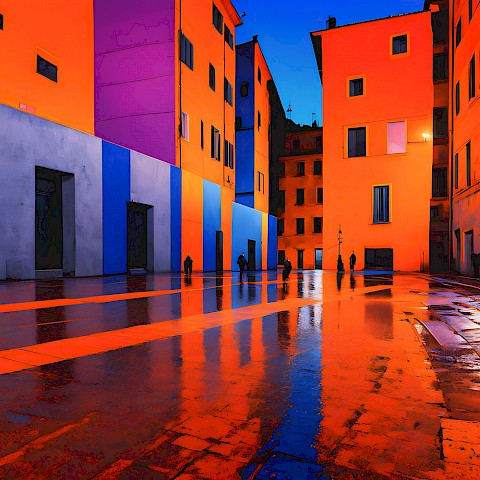|
01 IX 2025 |
14. Exhibited Oil Paintings 1830-50
517 - Modern Rome - Campo Vaccino | |

| ||
|
Exhibited in 1839 with the following quotation from Byron: The moon is up, and yet is is not night, The sun as yet divides the day with her. A companion to 'Ancient Rome; Agrippina Landing with the Ashes of Germanicus' (No.516). This pair, following the 'Ancient Italy' and 'Modern Italy' exhibited in 1838, reflect the impact on Turner of Thomson's poem Liberty of which Part III (published in 1735) is devoted to tracing the establishment of Liberty in Rome and its subsequent loss after the death of Brutus. At the Academy the two pictures received mixed opinions. The most favourable were in the Art Union for 15 May and the Spectator for II May. 'Ancient Rome' the Art Union called 'Another of Turner's gorgeous works - a reckless example of colour, but admirable in conception, and brilliant in execution ... As usual, he has introduced "a story" ... and has summoned his fancy to restore the ancient glories of the eternal city'. 'Modern Rome' was 'A fine and forcible contrast... The glory has departed. The eternal city, with its splendours - its stupendous temples, and its great men - all have become a mockery and a scorn. The plough has gone over its grandeurs, and weeds have grown in its high places. The Spectator wrote that 'Turner is as gorgeous and mysterious as ever; and while we regret and condemn his extravagances, it is impossible not to admire the wondrous power of his art in representing an atmosphere of light. Ancient Rome... is a blaze of orange-golden sunshine, reflected from piles of architecture that must be of marble to be so steeped in the hues of light; and Modern Rome - Campo Vaccino ..., of which we see just enough to know what it is meant for, is also immersed in a flood of radiance, with a stream of silvery light from the new-risen moon glancing across the scene.' But the Athenaeum, II May, considered both 'Ancient Rome' and 'Modern Rome' to be in Turner's 'maddest manner' and Thackeray, writing under the name of Michael Angelo Titmarsh in Fraser's Magazine, June 1839, after praising 'The Fighting Temeraire’ , admitted that Turner's other performances are for the most part quite incomprehensible to me.' As usual Blackwood's Magazine, July-December 1839, was particularly harsh in its strictures: 'We have Ancient and Modern Rome, both alike in the same washy-flashy splashes of reds, blues and whites, that, in their distraction and confusion, represent nothing in heaven and earth, and least of all that which they profess to represent, the co-existant influence of sun and moon. It is too painful; and we stay our hand in disgust and sorrow.' An image generated by an AI Machine Learning Model Property of the artist. | ||
